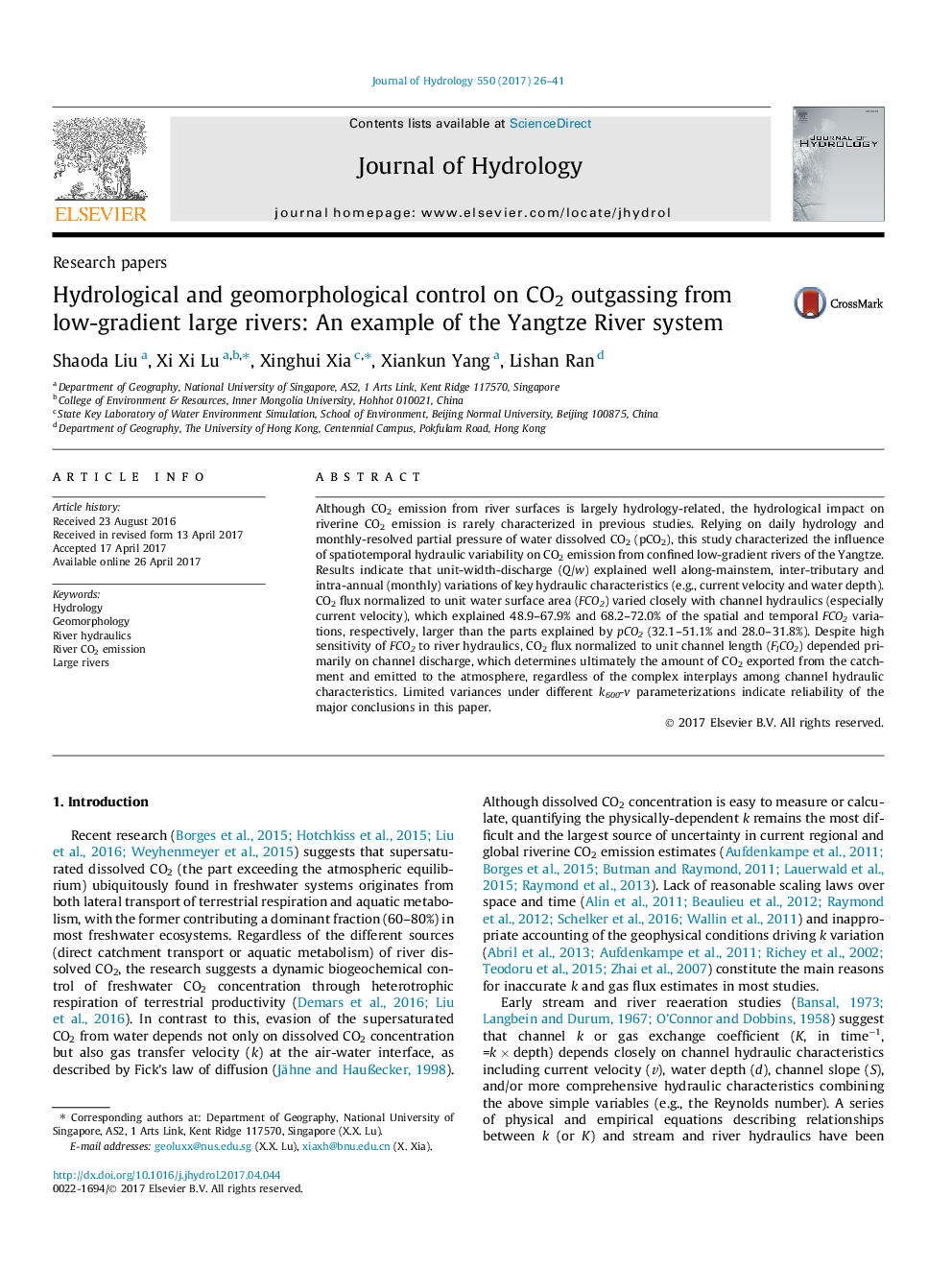| Article ID | Journal | Published Year | Pages | File Type |
|---|---|---|---|---|
| 5770737 | Journal of Hydrology | 2017 | 16 Pages |
â¢Unit-width-discharge (Q/w) explains spatiotemporal current velocity variation.â¢Unit water surface area CO2 flux (FCO2) varies closely with river hydraulics.â¢Unit channel length CO2 flux (FlCO2) depends largely on river discharge.â¢River hydraulics explains larger part of CO2 flux variation than pCO2.â¢Current velocity is the most important factor determining k600 in large rivers.
Although CO2 emission from river surfaces is largely hydrology-related, the hydrological impact on riverine CO2 emission is rarely characterized in previous studies. Relying on daily hydrology and monthly-resolved partial pressure of water dissolved CO2 (pCO2), this study characterized the influence of spatiotemporal hydraulic variability on CO2 emission from confined low-gradient rivers of the Yangtze. Results indicate that unit-width-discharge (Q/w) explained well along-mainstem, inter-tributary and intra-annual (monthly) variations of key hydraulic characteristics (e.g., current velocity and water depth). CO2 flux normalized to unit water surface area (FCO2) varied closely with channel hydraulics (especially current velocity), which explained 48.9-67.9% and 68.2-72.0% of the spatial and temporal FCO2 variations, respectively, larger than the parts explained by pCO2 (32.1-51.1% and 28.0-31.8%). Despite high sensitivity of FCO2 to river hydraulics, CO2 flux normalized to unit channel length (FlCO2) depended primarily on channel discharge, which determines ultimately the amount of CO2 exported from the catchment and emitted to the atmosphere, regardless of the complex interplays among channel hydraulic characteristics. Limited variances under different k600-v parameterizations indicate reliability of the major conclusions in this paper.
